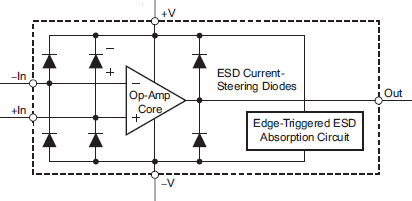I am trying to get extremely low power consumption from an op amp. I've found the TLV521 which has a 350 nA typ. current consumption, but I want to try and drive that lower by power cycling it at ~10 Hz, since that's all i need to sample the output at. I can't find information on the initial power on for the device (or op amps in general), so I can't tell if this is feasible. Does anyone have an idea of the length of time required to achieve a stable signal?
Thanks,


